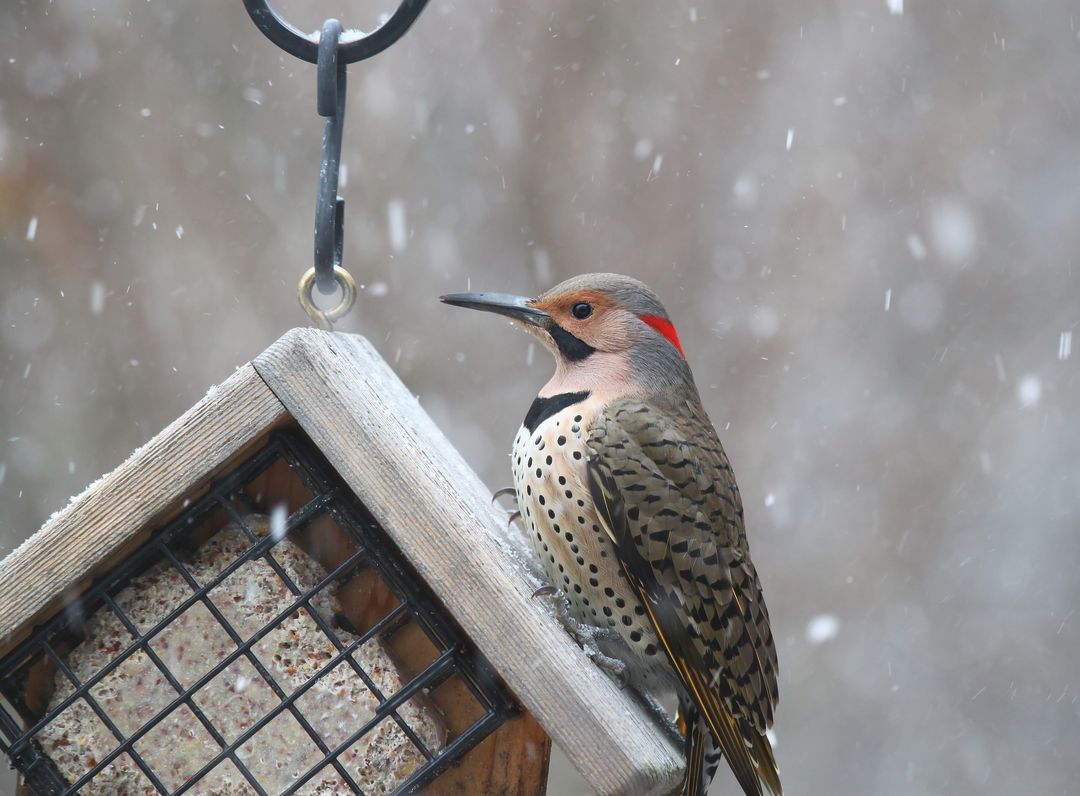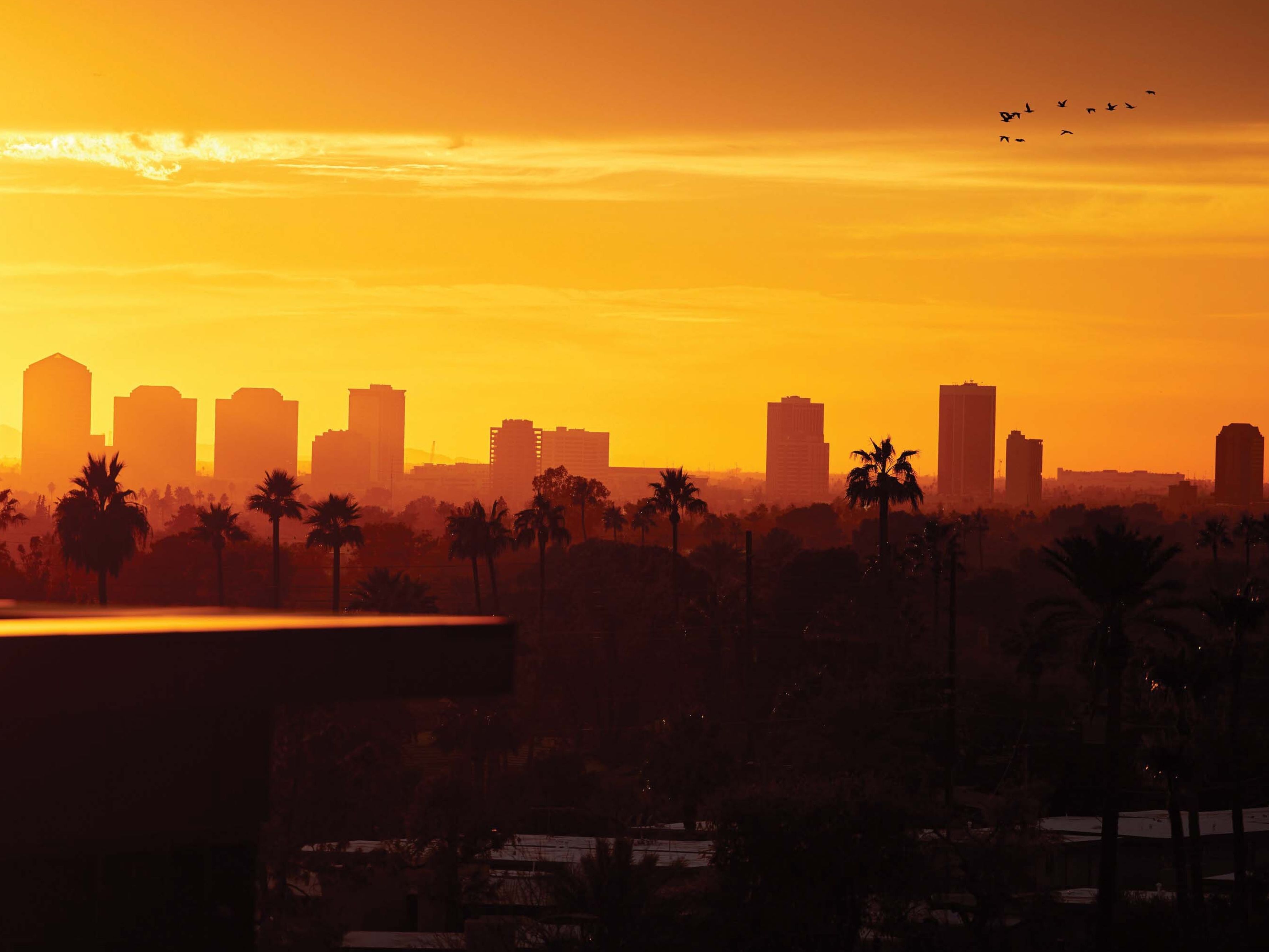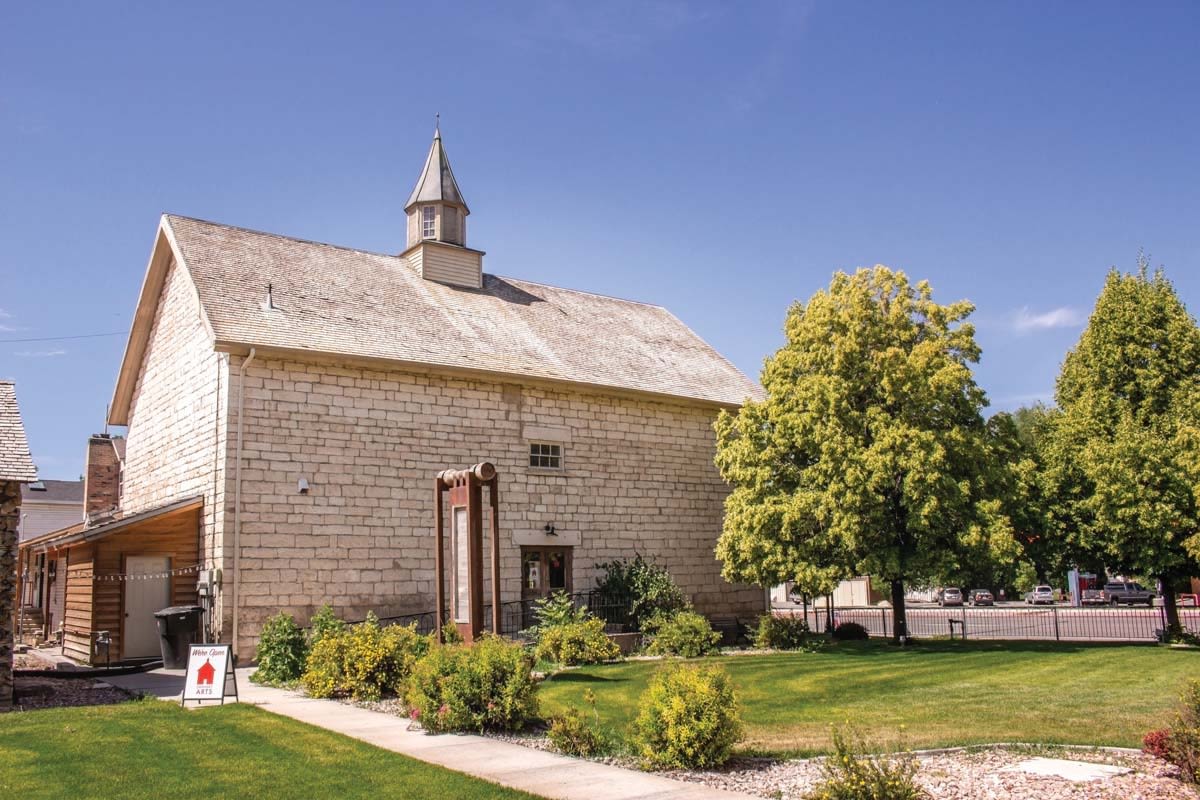Wings of Winter: Your Guide to Feeding Cold Weather Birds

Northern flickers (pictured) and woodpeckers enjoy suet feeders in the winter.
Image: Elaine Davis
Skiers celebrate the arrival of winter in Park City and the fabled Utah snow that follows. Birds do not. Common wintering Park City birds, like chickadees, house finches, and siskins, struggle to survive when extreme cold saps their precious energy and heavy snow covers natural food sources. Backyard bird feeding in winter can help ensure their survival. It’s fun, easy, relatively inexpensive, and educational for both children and adults.
Chickadees, finches, and juncos are the most common winter visitors to Park City–area bird feeders. Pine siskins, diminutive members of the finch family, often swarm feeders on frigid mornings. Arriving in a blur of tiny wings and a hint of yellow feathers, these avian clowns are great fun to watch as they posture and squabble over seeds, often hanging upside down from feeders and branches. Hunger trumps fear of humans for siskins, and they’ll sometimes perch eagerly on your head or shoulders as you refill feeders.
Black-oiled sunflower seeds are best for feeding in general. Their high oil content provides valuable energy for birds. Hulled sunflower seeds (a little more expensive) work best for finches and other birds that can’t easily open seed hulls. White proso millet is a good small seed, easily opened by ground-feeding birds. Suet is relished by downy woodpeckers, northern flickers, and other insect-eating birds.
Bird feeders can also attract unwanted visitors, such as squirrels and raccoons, who can wreak havoc on your seed stock and break perches. Most supply stores carry squirrel-proof feeders and baffles that keep marauders at bay.
Sharp-shinned and Cooper’s hawks also visit Park City in winter and make a living catching small birds and meadow voles, so don’t be surprised or upset if a hawk sets up shop near your feeders. They need to eat, too, and it’s all part of nature’s cycle.
Utah birding expert Bill Fenimore (the owner of Wild About Birds Nature Center in Layton and the author of the book series My Backyard Birds) counsels those who are willing to feed local birds to stay the course once they start. “Birds are creatures of habit, and they’ll grow dependent on your feeders,” he says. “It’s very important to keep feeding them throughout the winter. When winter breaks and the snow melts, you can stop. But if you feed year-round, you’ll see an amazing variety of colorful birds as they migrate through Utah.”



































